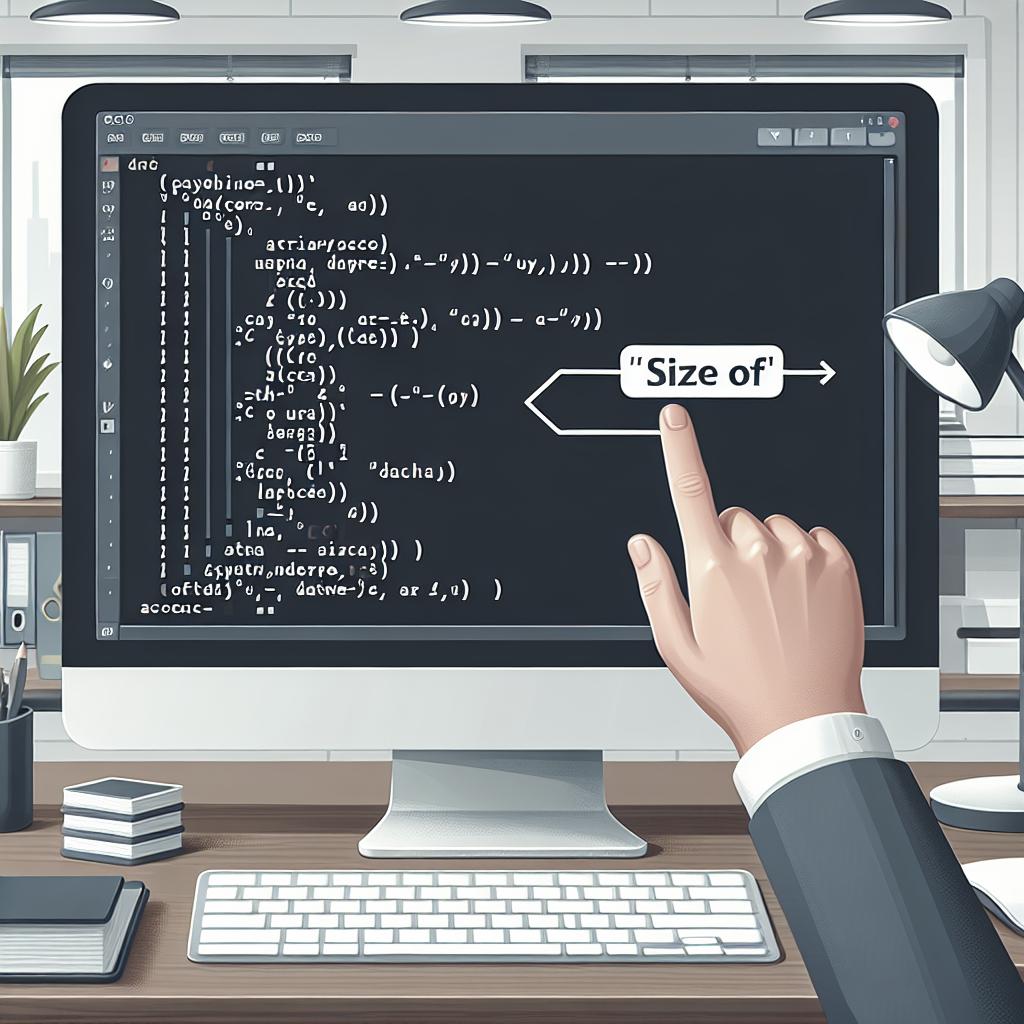Finding the Size of an Array in C using the sizeof Operator
Array manipulation is a fundamental skill in C programming, central to everything from simple tasks to complex algorithms. For programmers, understanding how to determine an array’s size is crucial, as it can often influence program functionality and efficiency. This article delves deeply into the method of using the sizeof operator to find an array’s size in C. We begin by understanding what arrays are in C, then explore the exact process of determining their size using the sizeof operator. Additionally, we touch upon a clever trick involving pointer arithmetic to determine an array’s length. By the end, you’ll have a comprehensive understanding of these techniques, empowering you to handle array-related functions with more confidence and precision.
What is An Array in the C Programming Language?
Arrays in C are collections of elements of the same data type, stored at contiguous memory locations. Rather than using separate variables for each value, arrays allow programmers to store and manage large amounts of data efficiently with a single identifier. This characteristic makes arrays particularly useful for handling lists of similar items, such as a sequence of integers, floating-point values, or even characters.
The structure of an array is defined with brackets, where you specify the size that determines how many elements an array can hold. For example, declaring an integer array of size 5 would look like this:
int numbers[5];
. Once declared, each element within the array can be accessed using its index, ranging from 0 to the size of the array minus one. This feature enables efficient iteration and manipulation of the array’s elements, forming the backbone of many C programs.
How to Find the Size of An Array in the C Programming Language
Determining an array’s size in C typically involves the usage of the
sizeof
operator, a key feature of C that returns the size (in bytes) of a data type or object in memory. To find an array’s number of elements, the common formula is:
sizeof(array) / sizeof(array[0])
. This calculation works effectively by determining the total bytes the array occupies and dividing it by the number of bytes of one element.
For example, if you have an integer array,
int array[10];
, and each integer is 4 bytes on your system, the array’s total size would be 40 bytes. By dividing this size by
sizeof(array[0])
, which is 4 bytes, you would correctly conclude that there are 10 elements in the array. It’s crucial to note that this method only works when the array’s size is known at compile time, illustrating one of the static properties of arrays in C.
Using Pointer Arithmetic Trick
Another intriguing method to determine the number of elements in an array involves pointer arithmetic. Although less commonly used, this method can be quite insightful and illustrates deeper knowledge of C programming. In this approach, pointers are used to access and manipulate memory addresses, allowing programmers to efficiently traverse arrays without explicitly using array indices.
To utilize this technique, consider obtaining a pointer to the start of the array and another pointer to its end. Subtracting these two pointers gives the number of elements within the array. For instance, if you have an array named
array[]
, you might use the expression
(*(&array + 1) - array)
to determine its length. It’s a clever trick that takes advantage of how arrays are stored and accessed in memory, and while not always necessary, enhances understanding of pointer arithmetic and array manipulations.
Summary of main points
| Concept | Description |
|---|---|
| Array Definition | Arrays are collections of elements of the same type stored at contiguous memory locations, enabling efficient data management. |
| sizeof Operator | Used to calculate the total size of an array in bytes, and subsequently its element count when divided by the size of one element. |
| Pointer Arithmetic | Advanced technique utilizing memory addresses to determine the number of elements in an array, showcasing in-depth understanding of arrays. |
Similar Reads


